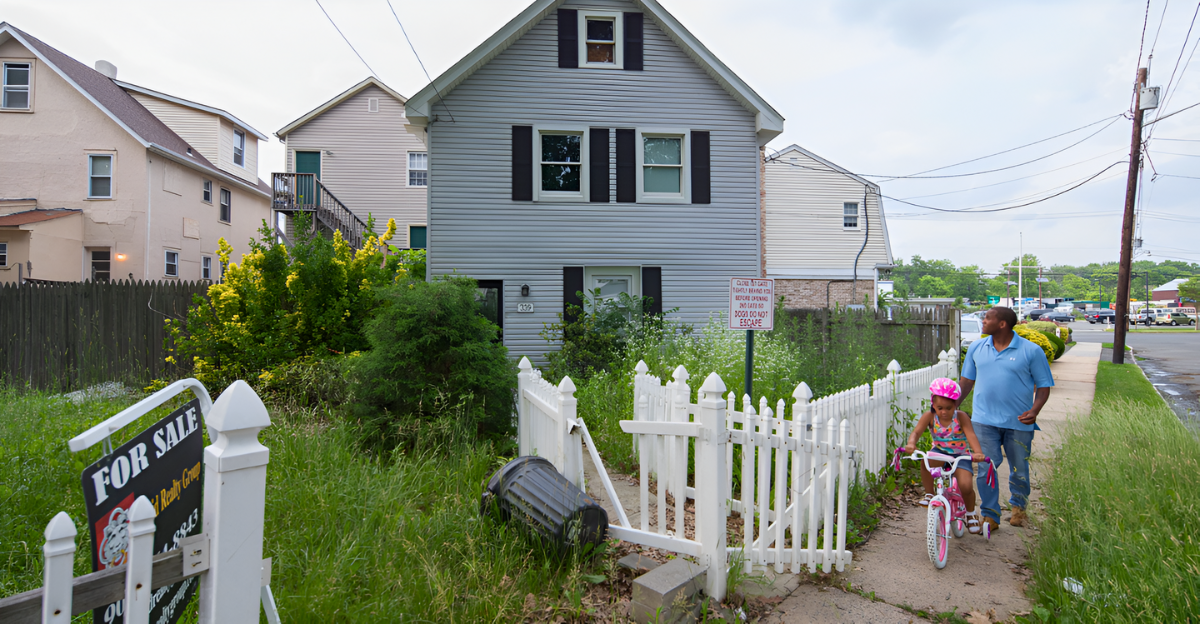
A staggering 11.7 million households in the U.S. now spend at least half of their income on rent, an unprecedented burden not witnessed in decades. According to a Harvard Joint Center for Housing Studies report, this alarming trend has dramatically escalated since the pandemic began, as rising rents have outpaced stagnant wages.
In bustling cities like Miami and New York, some renters find as much as 66% of their pre-tax earnings disappearing into rent payments. “I never thought half my paycheck would just disappear for rent,” reflects one frustrated New Yorker. The question now looms: Is this just a warning sign or have we entered a new normal for America’s renters?
Unprecedented Pressure

As we move into 2024, the strain on U.S. renters is intensifying, with the average household spending 42% of its pre-tax income on housing, up from 35% just three years ago. This leap is most acute in cities like Atlanta, where the cost of a one-bedroom apartment often equates to more than two weeks’ worth of minimum-wage pay.
Analysts declare this “the worst rental burden in modern U.S. history,” leaving many families grappling with their basic needs. The reasons behind the rapid surge in housing costs are complex; let’s explore the roots of this growing crisis.
Roots of a Crisis

For years, experts have cautioned that devoting more than 30% of one’s income to rent poses significant risks. Nearly half of all U.S. renters now find themselves in that precarious position. Following the 2008 financial crisis, rent burdens were temporarily easing, but the surge in demand and stagnant wages during the pandemic turned back the clock on those gains.
Today, the number of cost-burdened renters surpasses the peak of the Great Recession. How did this decades-old benchmark of housing affordability become an unattainable dream for millions?
Spiraling Rents

The aftermath of the pandemic saw real rents hitting unprecedented highs as demand surged while supply remained limited. Currently, the national median asking rent hovers around $1,650. Factors like pandemic-driven migration and high mortgage rates have forced more Americans into rental properties, further inflating prices.
As rent continues to climb, households spending over 50% of their income on housing reached a record high in 2024. Each rent increase pushes more families into a perilous position, straddling the line between affordability and crisis.
The 50% Marker

Statistics reveal a bewildering reality: rent now accounts for more than half of typical renters’ earnings in cities such as Miami and New York, sometimes soaring as high as 66%. Per research by Moody’s Analytics and Harvard, this level is the highest recorded since tracking began in 1999.
As a result, over 22 million renters are now classified as “cost-burdened,” while 11.7 million are “severely burdened,” spending half or more of their income simply to secure housing. The financial strain is palpable, leading individuals to wonder how long they can sustain this lifestyle.
Metro Pain Points

Sunbelt metros like Miami, Atlanta, and Los Angeles are bearing the brunt of this crisis, with Atlanta’s average one-bedroom apartment costing a staggering 132% of a full-time minimum-wage worker’s monthly earnings. In Florida, a heartbreaking 86% of extremely low-income renters are deemed “cost-burdened,” making it the highest rate nationwide.
“It’s not just high-cost cities anymore,” underscores one housing analyst. The issue now transcends individual locations, making the rent crisis a national phenomenon that requires urgent attention and action.
Personal Hardships

For millions surviving on incomes below $30,000 a year, rent leaves them with a mere $310 per month to cover all other expenses, a shocking 47% decline in disposable cash since 2001. “I skip meals so I can make rent,” shares a Miami hospitality worker, echoing sentiments felt by seemingly all corners of the nation.
As more households allocate over half their income towards housing, essentials such as food, medicine, and transportation suffer. The consequences of a skyrocketing rent burden ripple through every aspect of a family’s quality of life and security.
Policy Gaps Widen

The strain on government support systems is palpable. In Florida, the state leads the nation in requests for housing assistance among extremely low-income renters, creating an unsustainable burden on local budgets. Sadly, fewer renters qualify for “affordable housing” as definitions fail to keep pace with soaring rents.
The competition for limited rental vouchers grows ever fiercer, overshadowing ongoing conversations about policy solutions. Cities across the country face tough choices: either expand support systems or risk an alarming rise in Homelessness and instability.
National Shockwaves

This ongoing affordability crisis hinders individual mobility and overall economic growth. According to Moody’s, high-rent metros have noticed a decline in in-migration as potential workers become priced out even in job-rich areas.
National data from Redfin indicates that only 39% of renters today earn enough to keep their rent below the 30% threshold, a stark decline from 60% five years ago. As rents continue to outstrip wage growth, the prospect of relocating for better opportunities evolves from a viable choice to an unattainable luxury.
Collateral Damage

The consequences of rising rents extend well beyond personal finances. A substantial 12% year-over-year rise in Homelessness has added 70,000 new people to the ranks of the unhoused in 2023, a reality directly linked to unaffordable rents. “You can’t separate the surge in unsheltered homelessness from the burden of rent,” warns the National Alliance to End Homelessness.
Stagnant household formation rates signify young adults delaying independence, often choosing to remain in their family homes longer. The rising tide of rental costs leaves lasting scars on society’s fabric, impacting future generations.
Frustrated Tenants

Tenant advocacy groups have reported a surge in demand for legal assistance and rent strike campaigns, particularly in large urban centers like New York and Los Angeles. Landlords are increasingly alert to the rise in payment arrears, even as rental prices remain high.
“We’re seeing more working families who simply can’t keep up, even though they’re employed full-time,” shares a legal aid attorney from the Bronx. Amid rising frustration, tenants are poised to become either catalysts for change or victims of the system.
Changing Strategies

Some landlords are redefining their strategies in response to the escalating default risk. They offer free rent discounts or even one or two months to keep their units occupied in challenging markets. Some institutional investors are exploring creative solutions, but this shift is a mere Band-Aid over systemic issues plaguing the rental market.
Ultimately, the focus must remain on long-term changes needed to alleviate the pressure on renters and restore a sustainable balance to the housing landscape.
Bridging the Gap

Addressing the rental affordability crisis demands a multi-faceted approach. Solutions must include increasing the availability of affordable housing, redefining rental assistance programs, and finding ways to elevate wages to match the rising cost of living.
Community leaders and policymakers must work collaboratively to ensure those most affected can seek assistance without navigating an overwhelming landscape. With collective action and sustained commitment, we can begin to forge pathways toward a more equitable housing market.
A Call for Action

As the nation grapples with escalating rent burdens, the call for action is more urgent than ever. Bridging the gap between high housing costs and stagnant wages is essential for sustaining families and communities across the U.S. It’s time for stakeholders at all levels to rally for solutions that prioritize long-term affordability, secure funding for housing programs, and push for policies that protect both landlords and tenants alike.
Our collective future relies on ensuring that everyone has access to safe and affordable housing.
A Vision for Change

Looking forward, we must remain vigilant in advocating for housing solutions that reflect the needs of our evolving society. Rising rents and the broader affordability crisis demand comprehensive strategies and community engagement.
It’s essential to build supportive, sustainable communities where every individual can thrive, not just survive. As we channel our frustrations into actionable change, we can work together to reshape the housing landscape and create a future where everyone can call a place “home.”